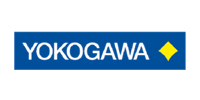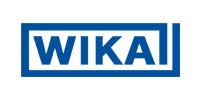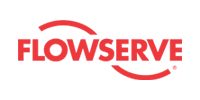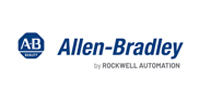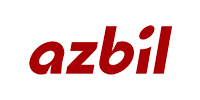Temperature Measuring Instrument
Food & Beverage
Industrial measuring instruments are crucial in the food and beverage industry to ensure product quality, consistency, safety, and compliance with regulatory standards. These instruments help monitor and control various parameters like temperature, pressure, flow, pH, and more during processing, packaging, and storage.
Here’s an overview of the main industrial measuring instruments used in the food and beverage industry:
1. Temperature Sensors
- Function: Measure and control temperature during food processing, cooking, pasteurization, and storage.
- Applications: Used in ovens, refrigerators, sterilizers, and fermentation tanks to ensure optimal temperature for food safety and quality.
- Types:
- Thermocouples: Widely used for their broad temperature range and fast response.
- RTDs (Resistance Temperature Detectors): Known for precision and stability in temperature measurement.
- Infrared Thermometers: Non-contact temperature measurement, ideal for continuous monitoring.
2. Flow Meters
- Function: Measure the flow rate of liquids and gases, such as water, juice, milk, or carbon dioxide.
- Applications: Used in bottling, mixing, and cooling processes where exact quantities of ingredients or fluids must be controlled.
- Types:
- Electromagnetic Flow Meters: Ideal for conductive fluids like juices, milk, and syrups.
- Coriolis Flow Meters: Provide accurate mass flow measurements, commonly used for dairy products and liquid additives.
- Ultrasonic Flow Meters: Non-invasive, suitable for clean-in-place (CIP) systems.
3. Pressure Gauges and Transmitters
- Function: Monitor the pressure in pipelines, tanks, and other equipment to ensure safe and efficient operation.
- Applications: Used in carbonation processes (beverages), vacuum systems (freeze-drying), and monitoring air pressure in packaging systems.
- Types:
- Mechanical Pressure Gauges: Simple and robust, used in various food processing lines.
- Digital Pressure Transmitters: Offer precise control and data logging for process automation.
4. Level Sensors
- Function: Detect and measure the level of liquids or solids in tanks, silos, and containers.
- Applications: Monitor levels of ingredients, water, oil, and other liquids in mixing tanks or bulk storage containers. Essential in processes like brewing, dairy processing, and ingredient storage.
- Types:
- Capacitive Level Sensors: Suitable for detecting both liquids and solids.
- Ultrasonic Level Sensors: Non-contact measurement for highly viscous liquids or sensitive materials.
- Radar Level Sensors: Used for accurate level measurement in large storage tanks.
5. pH Meters
- Function: Measure the acidity or alkalinity of a solution, essential for product stability, flavor, and safety.
- Applications: Critical in fermentation (beer, wine, yogurt), baking, cheese production, and monitoring the pH of water used in processes.
- Types:
- Portable pH Meters: Used for spot-checking in various stages of production.
- Online pH Sensors: Used for continuous monitoring in tanks or pipelines.
6. Turbidity Meters
- Function: Measure the cloudiness or clarity of liquids, indicating the presence of suspended particles.
- Applications: Used in beverage production (beer, juice) to control the filtration process and ensure the final product meets clarity standards.
- Types:
- Laser-based Turbidity Meters: Provide high precision in detecting small particles.
- Optical Turbidity Sensors: Used for continuous monitoring of clarity during production.
7. Refractometers
- Function: Measure the concentration of dissolved solids in a liquid by analyzing light refraction.
- Applications: Used in the food and beverage industry to measure sugar concentration (Brix scale) in juices, sauces, and syrups, ensuring product consistency.
- Types:
- Handheld Refractometers: Portable and easy to use for spot checks.
- Digital Refractometers: Provide more precise and automated measurements in production lines.

8. Conductivity Meters
- Function: Measure the electrical conductivity of a solution, which correlates to the ion concentration.
- Applications: Used to monitor water purity, the salinity of brines, and ensure cleaning effectiveness during CIP (Clean-In-Place) processes.
- Types:
- Two-electrode Conductivity Meters: Ideal for pure water measurement.
- Inductive Conductivity Sensors: Handle higher conductivity fluids like salt solutions.
9. Moisture Meters
- Function: Measure the moisture content of food products or ingredients, essential for maintaining quality, texture, and shelf life.
- Applications: Used in processes like baking, drying, and packaging to control moisture in flour, grains, powders, and processed foods.
- Types:
- Halogen Moisture Analyzers: Fast and accurate for sample testing.
- Microwave Moisture Sensors: Used for continuous, in-line moisture monitoring.
10. Density Meters
- Function: Measure the density of liquids, important for maintaining product consistency and quality control.
- Applications: Used in beverage production (e.g., alcohol concentration in spirits, sugar content in soft drinks) and in oil or syrup processing.
- Types:
- Vibrating Tube Density Meters: Provide highly accurate density measurements for liquids.
- Hydrometers: Simple tools for manual density measurement.
11. Viscometers
- Function: Measure the viscosity or flow resistance of liquids and semi-solids.
- Applications: Used to ensure the consistency of products like sauces, creams, syrups, and dairy products during formulation and processing.
- Types:
- Rotational Viscometers: Commonly used to measure the viscosity of thick liquids.
- Capillary Viscometers: Ideal for low-viscosity liquids like oils and juices.
12. Spectrophotometers
- Function: Analyze the color and chemical composition of food and beverage products.
- Applications: Used in the quality control of wine, beer, juices, and sauces to monitor color consistency and detect impurities.
- Types:
- UV-Visible Spectrophotometers: Widely used for chemical analysis in food and beverage products.
13. Gas Analyzers
- Function: Measure the concentration of gases such as oxygen, carbon dioxide, and nitrogen.
- Applications: Important in packaging (MAP – Modified Atmosphere Packaging), brewing (CO₂ monitoring), and ensuring the safety of storage environments.
- Types:
- Infrared Gas Analyzers: For detecting CO₂ levels in brewing and beverage carbonation.
- Electrochemical Oxygen Sensors: Used in food packaging to ensure appropriate oxygen levels for freshness.
Conclusion
Industrial measuring instruments are vital for ensuring the safety, quality, and efficiency of processes in the food and beverage industry. Instruments like temperature sensors, flow meters, pH meters, and moisture analyzers allow manufacturers to control critical parameters, optimize production processes, and comply with strict food safety regulations. The choice of instruments depends on the specific product and process requirements, as well as the need for precision and automation.
